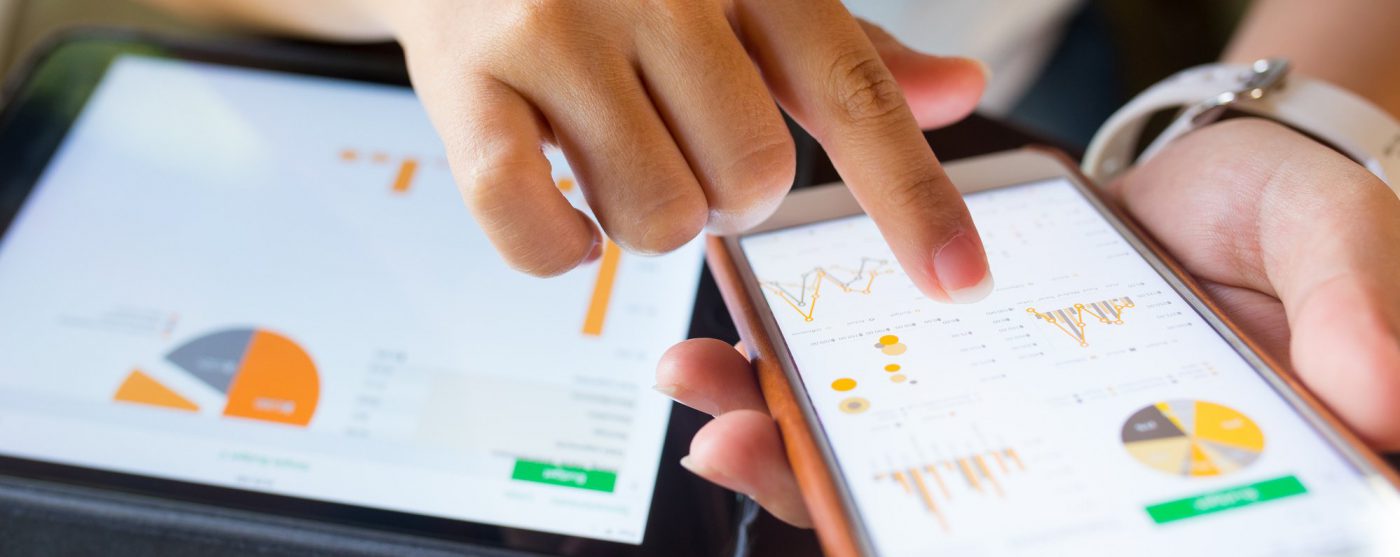Article at a Glance:
- Why Measure Social Media ROI?
- How to Measure Social Media ROI
- Identify Your Key Performance Indicators
- Align Your Social Media Objectives with Your Business Goals
- Track Your Social Media Expenses
- Time for Some Math
- Raising the Bottom Line
Social media marketing is overwhelming. Modern marketers are expected to be everywhere at once—Facebook, Twitter, LinkedIn, Instagram, Snapchat … the list goes on. But just being present on each of these platforms isn’t enough. Businesses need to be active on their social platforms, engaging their follower base and nurturing potential leads. But with actively drafting, publishing, and monitoring social content comes added work behind the scenes, and even though we know the importance of a strong social presence, when it comes time to measure social media ROI, we all get stuck in the midst of conflicting best practices.
It can be hard to quantify and measure your social media efforts, especially when you consider the number of trackable data points that exist. Should you track impressions, likes, or shares? Retweets, comments, or clicks? What about the money you’ve invested in paid promotion, as well as the amount of time an employee or team has dedicated to your efforts?
We know how difficult it can be to determine whether your company has gained any leads from social media. With so much data to digest, it’s easy to feel overwhelmed. So overwhelmed, in fact, that 60 percent of marketers say measuring ROI is one of their top three challenges. When you invest in social media, you not only invest your money, but also someone’s time. If you’re paying an employee or marketing agency to manage your social media accounts, chances are you’d like to see a return on your investment. You already know there’s value in social media marketing; you just need to learn how to measure it. That’s where we come in.
Why Measure Social Media ROI?
With metrics like returning visitor rate and engagement rate—as well as advances in heat mapping and behavioral targeting—why bother focusing on social media? Imagine running a blind Google AdWords campaign and never bothering to check how much you were paying per click, what your click-through rate looked like, or whether the audience members who clicked your ads actually wound up converting. This is essentially what you’re doing by not measuring your social media marketing efforts. Whether by choice or simply lack of resources, it’s time to re-evaluate your social media efforts and get started tracking ROI.
It’s important to remember that content performance on social is an indicator of its overall effectiveness—including its search performance. Yep, you read that right. Any time a piece of content is published on social media, search engines crawl the page, looking at many factors to determine its relevance. Generally, if search engines deem a piece of content relevant, they reward it with a higher ranking. In fact, Searchmetrics found there is a 20 percent correlation between Facebook signals and organic search ranking.
Despite all this information, 41 percent of companies still say they have no idea if their social media efforts are actually paying off. That’s because it’s difficult to tell how much revenue a tweet from last week brought in, or if your latest Instagram post boosted your bottom line. Most people, especially those new to the social media marketing game, get caught up in what we call vanity metrics—likes and reactions—instead of more robust measurements like followers, retweets, shares, and referrals. In the same way there are a myriad of social platforms to choose from, there are also a myriad of metrics to measure when calculating your social media ROI.
How to Measure Social Media ROI
Now that you know why you should measure social media ROI, it’s time to learn how. But before you get to show off the numbers and metrics you’ve worked so hard to achieve, you need to figure out how these numbers stack up against your company’s KPIs.
Identify your Key Performance Indicators
Key performance indicators (KPIs) help marketers measure the effectiveness of the functions and processes currently in effect at their organization. A KPI can be an uptick in brand awareness, sales, or conversions, but varies across different industries. When determining social media ROI, you need to assign a dollar amount to your conversion goals so you can fully understand how your social media marketing efforts are impacting your bottom line.
Let’s use Zoomcar, the largest car rental company in India, as an example. Zoomcar uses social media marketing to drive mobile app downloads. Consumers can make purchases within the app, and these purchases are what Zoomcar has identified as its primary KPI. Zoomcar knows its lifetime value of a customer is $70, and 40 percent of its mobile app users make a purchase. From this information, Zoomcar can determine a mobile app download is worth $28, and can strategize accordingly. Once your team has identified your KPIs, it’s time to dive even deeper.
Align your social media objectives with your business goals
You’ll need to align your social media objectives with your business goals, so you aren’t aimlessly sending social updates out into the abyss. Depending on your industry, your business goals could include reaching certain metric milestones like number of product purchases, content downloads, or subscriptions started.
Let’s say your primary business goal is to increase brand awareness. In this case, the metrics you’ll want to track include brand mentions, followers, and impressions. If you use a social media scheduling tool—like Hubspot, Sprout Social, or Hootsuite—this information might be accessible from the tool’s dashboard. Additionally, if you haven’t already, you’ll need to set up Google Analytics. Google Analytics is a free tool you can use to set up trackable goals and monitor how frequently visitors complete the actions you define.
Track your social media expenses
Without an understanding of your expenses, you won’t be able to calculate your earnings. You can avoid this by tracking your social media expenses, including things like scheduling tools you use, as well as the cost of paid amplification, if you’re promoting your posts. Furthermore, don’t forget to calculate the total number of hours you or your team is contributing to the execution of your strategy, in order to better understand what you’re paying for social per hour.
Time for Some Math
Once you’ve outlined your expenses, you can [finally] calculate the ROI of social media using this formula: (EARNINGS – COSTS) x 100 / COSTS.
EXAMPLE: Let’s say you invest $500 in a social media campaign and make $1,000 in return. Your calculation would look like this: (1,000 – 500) x 100 / 500 = 100% ROI.
If you want to calculate ROI for each specific social platform you use, segment your earnings and costs per channel, and then use the same formula you see above. Once you’ve had a chance to look at the numbers, you’ll be able to decide which social platforms are worth staying active on, and whether or not you should remove any from your arsenal. If any social media channels are bringing in a negative ROI, consider spending less on paid promotion or implementing a new, more effective campaign before deleting your profile for good.
Last, but certainly not least, it’s not all about the numbers. The benefits of having a strategic and informed presence on social media are endless. Most notably, social media is one of the easiest ways to increase brand exposure. Consider this: If a well-known industry leader engages with one of your tweets, their followers will see it, effectively increasing awareness of your brand.
Raising the Bottom Line
Whether you are already actively tracking and analyzing social media metrics or you’re just getting started, understanding how to measure social media ROI is an invaluable skill for modern marketers. It not only informs your social media strategy, but helps ensure you’re getting the most bang for your buck with every post, tweet, and snap you send.
Having a strategic and informed presence on social media will also help you establish trust among your key audience members, and we all know the importance of trust: More trust leads to better engagement, which leads to higher conversions and ultimately, better brand perception.
Now that you know how to measure social media ROI, get a head start on outlining your goals with help from our blog: Killer KPIs for Marketing Managers Struggling to Show Content ROI.




